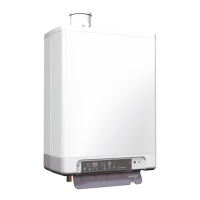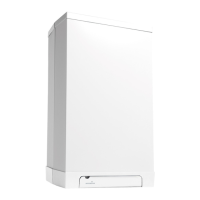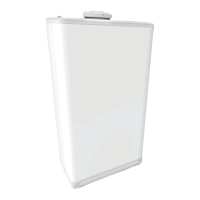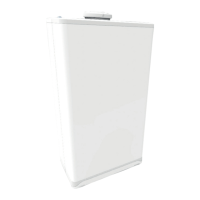After rectifying the fault press the reset button and the appliance will start up again. For the meaning of the other operating and
fault codes please refer to the installation instructions.
5 FILLING AND BLEEDING THE APPLIANCE AND INSTALLATION
NB: Switch the appliance off with the key. Do not switch the appliance on again until after filling and bleeding.
5.1 Central heating system
In order to guarantee a successful operation of the CH installation the water pressure in the system in case of a cold system should be
between 1 and 2 bar (Indicated on the temperature display when the appliance is in off mode ( - on display)).
If the pressure is too low, the system should be topped up.
If the pressure comes below 0,3 bar when the appliance is active the water pressure value will be displayed (flashing digit) instead of
the time read-out. The system should be topped up.
Proceed as follows:
• Connect the filling hose to the drinking water tap and fill the hose with water until there is no longer any air in the hose.
Filling is only allowed via an approved filing loop that has check valves fitted.
• Connect the filling hose to the filling / drain tap at the bottom of the appliance.
• Open the drinking water tap and then the filling / drain tap.
• Fill the appliance and the system until a cold water pressure between 1 and 2 bar is reached.
• Close the filling / drain tap and then the drinking water tap.
• Bleed the system and the appliance.
The appliance bleeding point is located at the top left on the appliance.
The system can be bled via the bleed taps on the radiators and/or an air bleed in the piping.
• Check that after bleeding the system the water pressure in the installation is still between 1 and 2 bar; if not, repeat the procedure.
If the system has to be filled more frequently than a few times a year, notify your installer since this means that there is probably a leak.
5.2 Domestic hot water supply
Pressurise the DHW part of the appliance by opening the main tap and/or the inlet assembly.
Remove air from the appliance and the pipe work by opening a hot water tap. Leave the tap open until all the air
has disappeared from the appliance and the pipe work. Close the hot water tap.
Check the connections for leakage.
5.3 Frost protection
To prevent freezing of the condensate drain, the appliance should be installed in a frost-free room.
The appliance is equipped with frost protection which, as long as mains current is present, switches on the CH pump
and if necessary the burner when the heat exchanger temperature falls too far.
NB: If an internal or external frost thermostat has been installed in the system and connected to the appliance, it is not active when the
appliance has been switched off at the operating panel ( - on service display).
6 MAINTENANCE
The appliance can be cleaned with a damp cloth. Do not use aggressive or abrasive cleaning agents or solvents.
The appliance and the installation should be checked and where necessary cleaned annually by a registered
installer. The same applies to the flue pipe and air supply pipe.
If you smell gas or are worried about gas safety please call the National Gas Emergency Service at 0800 111 999.
For more details visit the website of the National Grid www.nationalgrid.com/uk/Gas/Safety/Emergency.
Always use a Gas Safe registered engineer to fit, fix or service your gas appliance. To find or check an engineer call Gas Safe
Register’s free helpline on 0800 408 5500 or visit www.GasSafeRegister.co.uk.
Intergas boilers are manufactured in a Kiwa ISO 9001 certified production faccility.
Intergas Heating Ltd
882887-08
Intergas Heating Ltd Tel: 01527 888000
Building 94, Bay 1 Vantage Point Fax: 01384 279480
The Pensnett Estate info@intergasheating.co.uk
Kingswinford www.intergasheating.co.uk
West Midlands
DY6 7FS
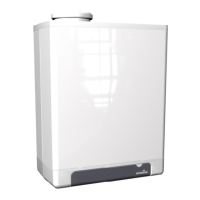
